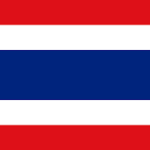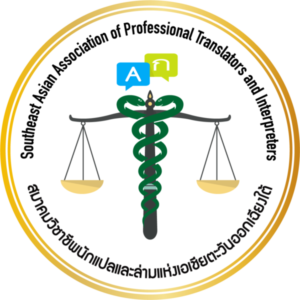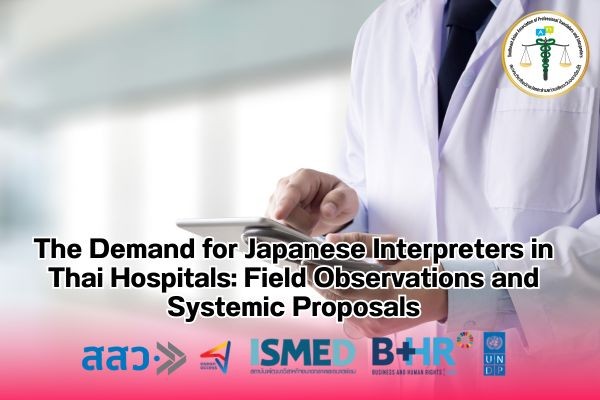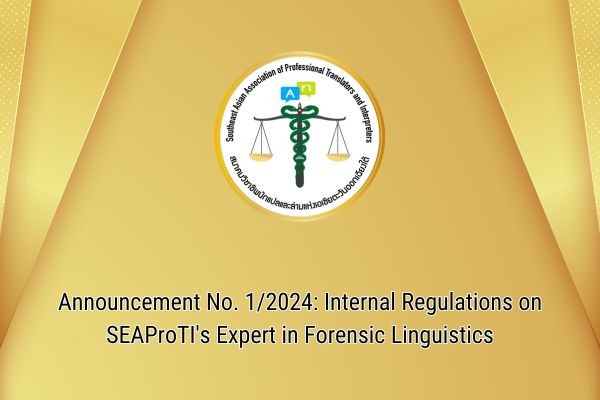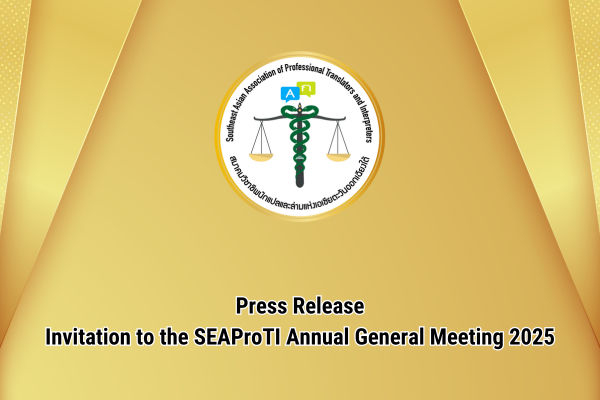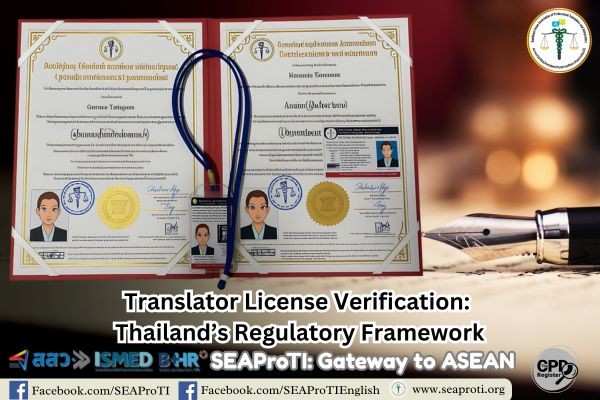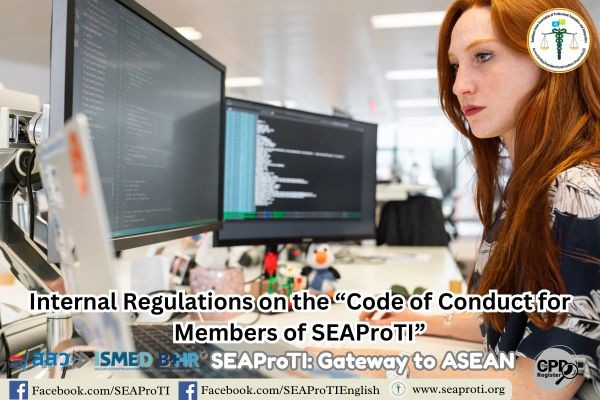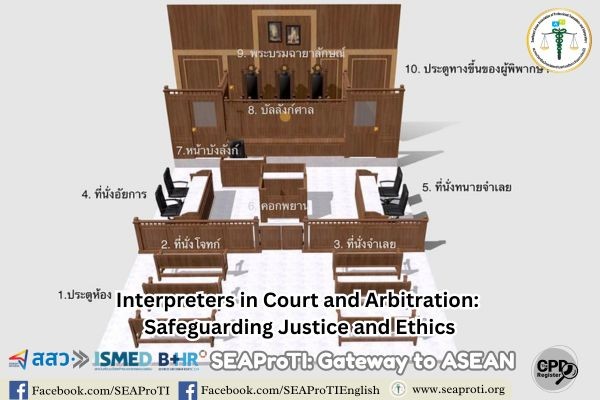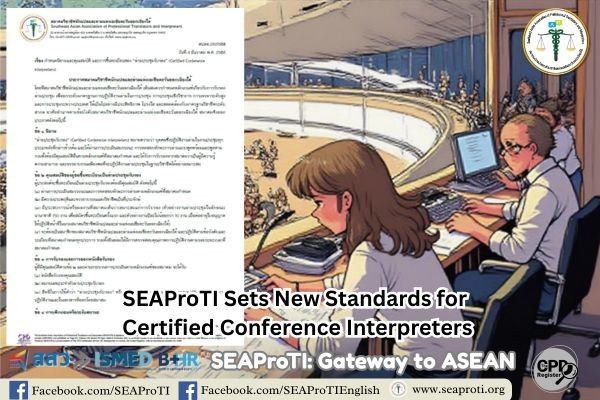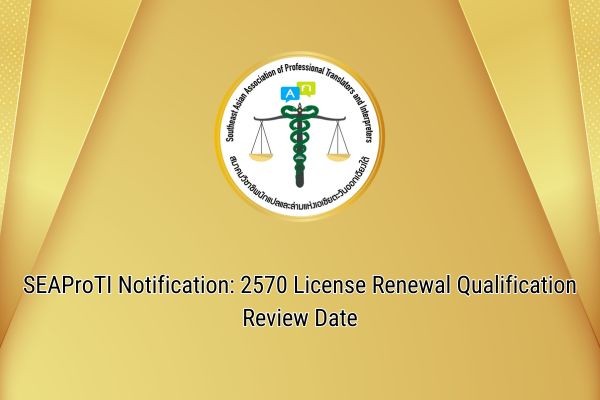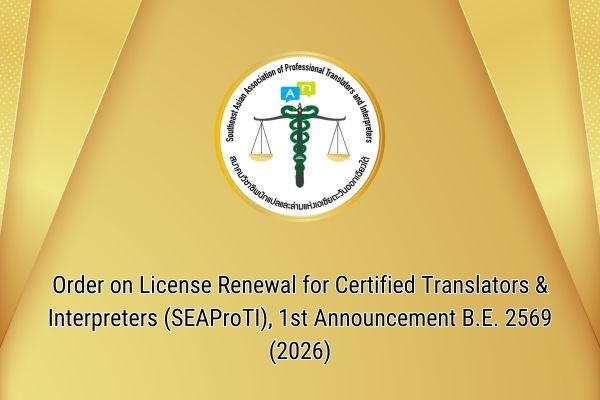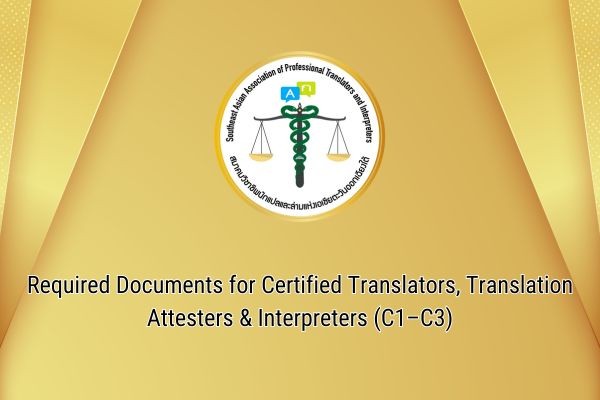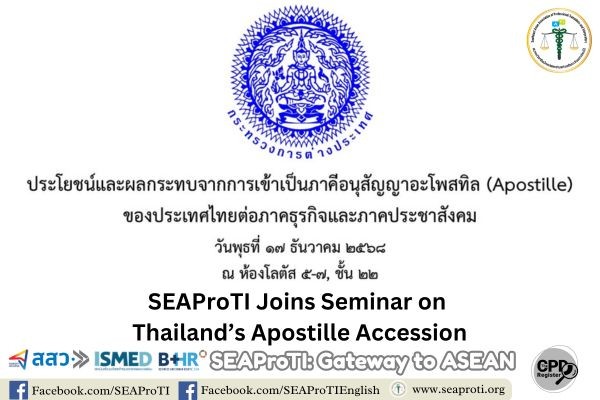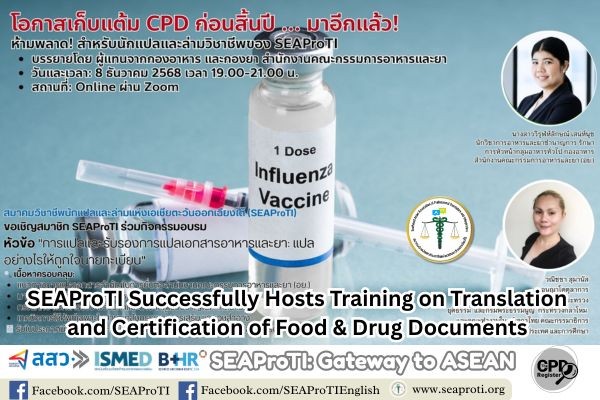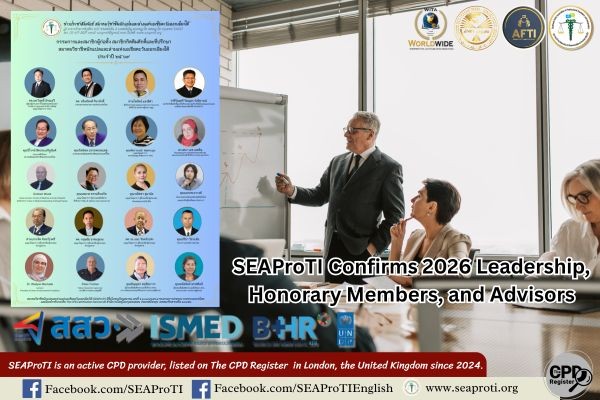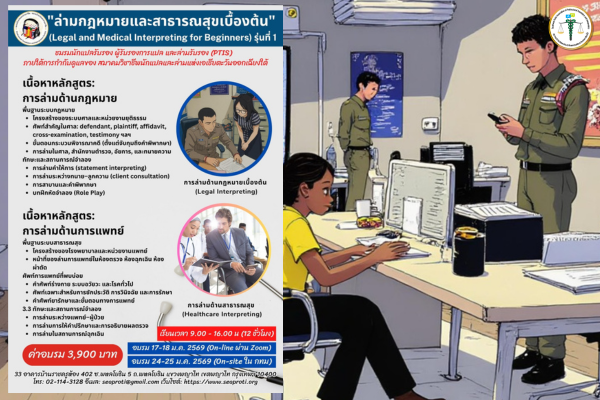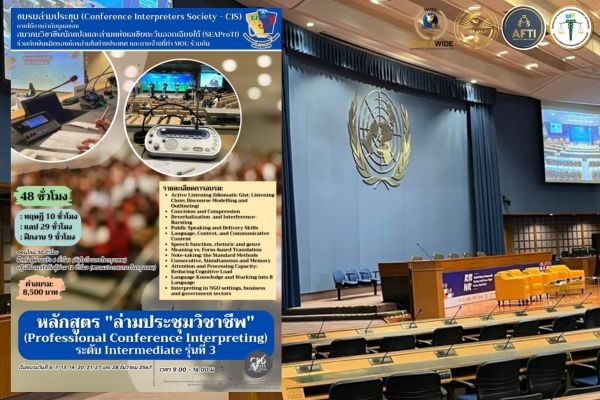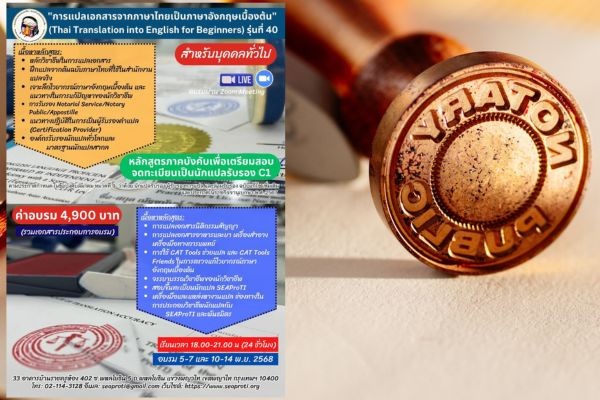The Demand for Japanese Interpreters in Thai Hospitals: Field Observations and Systemic Proposals
Abstract
7 July 2025, Bangkok – Thailand remains a medical hub for foreign nationals, including a substantial Japanese expatriate population. Recent field observations at a private hospital in Bangkok reveal a persistent shortage of Japanese medical interpreters, especially during peak service hours. This article discusses the systemic implications of this shortage, based on firsthand observations at a pediatric department with a high volume of Japanese patients. Despite a decline in overall numbers from previous years, the need for accurate, culturally sensitive communication remains high. The article proposes structural reforms to improve medical interpretation services in Thailand, focusing particularly on the Japanese language, in order to enhance the quality and safety of cross-cultural healthcare delivery.
Keywords: medical interpreting, cross-cultural communication, healthcare language access, Japanese interpreters, Thai hospitals
1. Introduction
Thailand has positioned itself as a regional medical hub in Southeast Asia and attracts a considerable number of foreign nationals seeking medical services, particularly Japanese expatriates residing long-term in cities such as Bangkok, Chonburi, Rayong, and Chiang Mai (Japan External Trade Organization [JETRO], 2024). Effective communication between healthcare professionals and patients is critical, especially when language barriers exist. To bridge this gap, hospitals commonly employ interpreters who facilitate doctor-patient interactions across languages and cultures.
However, preliminary field observations at a leading private hospital in Bangkok reveal that during periods of high patient influx, the number of Japanese interpreters available falls significantly short of demand. This shortage leads to delays in service, strained staff resources, and risks of miscommunication in sensitive medical contexts.
2. The Role of Interpreters in Medical Settings
Medical interpreters serve a vital role in ensuring that patients with limited proficiency in the local language can communicate effectively with healthcare providers. Their responsibilities go beyond simple linguistic conversion to include maintaining accuracy, neutrality, and cultural sensitivity (Hsieh, 2015). In high-stakes healthcare scenarios, a single error in interpretation may lead to misdiagnosis or improper treatment.
Competent medical interpreters must possess not only strong language skills but also a working knowledge of medical terminology, clinical procedures, and ethical standards such as confidentiality and impartiality (Angelelli, 2004). Countries such as the United States, Japan, and Australia have developed national certification systems for medical interpreters, supported by standardized training programs and codes of ethics. For example, the National Council on Interpreting in Health Care (NCIHC) provides a nationally recognized framework for interpreter ethics and competence in the United States (NCIHC, 2005).
3. Field Observation and Emerging Challenges
Observations conducted at a pediatric department in a private hospital in Bangkok revealed a high number of Japanese mothers bringing their children for medical consultation during peak hours. Hospital staff, particularly nurses, reported a critical shortage of Japanese interpreters, with only 3–4 available on-site that day. Due to the high volume of patients, these interpreters were in constant demand, leading to competition among departments to access interpretation services.
Nurses noted that in previous years, during peak Japanese residency in Thailand, the hospital employed up to 5–6 Japanese interpreters daily in a single department. Although the number of Japanese patients has decreased in recent years, the demand for professional interpreters remains high, especially in pediatric care, where accurate communication with both children and guardians is essential. In some cases, bilingual staff were asked to fill in temporarily, raising concerns over interpretive accuracy and ethical standards.
4. Systemic Proposals for Interpreter Development
To ensure the sustainability and quality of medical interpretation services in Thailand, particularly for languages such as Japanese, several policy and structural recommendations are proposed:
- Establish a national certification framework for medical interpreters, endorsed by health authorities and relevant professional associations.
- Develop specialized medical interpretation training programs, including medical terminology, ethical practice, and role-play simulations of real-world clinical scenarios.
- Provide financial incentives and staffing support for hospitals, especially those serving large foreign populations, to hire full-time professional interpreters.
- Foster inter-hospital interpreter networks and partnerships with interpreter associations to facilitate on-call or rotational deployment of interpreters for high-demand periods.
- These strategies would align Thailand’s healthcare interpretation practices with global standards, improving patient safety and institutional efficiency.
5. Conclusion
Despite Thailand’s advancement in medical infrastructure and its reputation as a healthcare destination, the availability of professional interpreters remains a critical gap, particularly for the Japanese language. This study underscores the urgent need for systemic improvements in the organization, training, and certification of medical interpreters. Addressing these challenges is essential not only for enhancing the quality of cross-cultural medical communication but also for upholding the rights of foreign patients to safe, informed, and dignified healthcare.
References
- Angelelli, C. V. (2004). Medical interpreting and cross-cultural communication. Cambridge University Press.
- Hsieh, E. (2015). Bilingual health communication: Working with interpreters in cross-cultural care. Routledge.
- Japan External Trade Organization. (2024). Overview of Japanese companies and residents in Thailand. https://www.jetro.go.jp
- National Council on Interpreting in Health Care. (2005). National code of ethics for interpreters in health care. https://www.ncihc.org
SEAProTI’s certified translators, translation certification providers, and certified interpreters:
The Southeast Asian Association of Professional Translators and Interpreters (SEAProTI) has officially announced the criteria and qualifications for individuals to register as “Certified Translators,” “Translation Certification Providers,” and “Certified Interpreters” under the association’s regulations. These guidelines are detailed in Sections 9 and 10 of the Royal Thai Government Gazette, issued by the Secretariat of the Cabinet under the Office of the Prime Minister of the Kingdom of Thailand, dated July 25, 2024, Volume 141, Part 66 Ng, Page 100. the Royal Thai Government Gazette
ความต้องการล่ามภาษาญี่ปุ่นในโรงพยาบาลไทย: ข้อสังเกตเชิงภาคสนามและข้อเสนอเชิงระบบ
บทคัดย่อ
7 กรกฎาคม 2568, กรุงเทมหานคร – ในปัจจุบัน โรงพยาบาลในประเทศไทยจำนวนหนึ่งยังคงให้บริการแก่ผู้ป่วยชาวต่างชาติอย่างต่อเนื่อง โดยเฉพาะกลุ่มชาวญี่ปุ่นที่พำนักอยู่ในประเทศไทยไม่ว่าจะในฐานะนักธุรกิจ ครอบครัวของแรงงาน หรือผู้เกษียณอายุ ปัญหาการขาดแคลนล่ามภาษาญี่ปุ่นในโรงพยาบาลเอกชนบางแห่งในกรุงเทพมหานครสะท้อนถึงข้อจำกัดด้านโครงสร้างในการจัดให้มีบริการล่ามทางการแพทย์อย่างเป็นระบบ การวิจัยเชิงภาคสนามเบื้องต้นนี้อ้างอิงจากข้อสังเกตจริงในช่วงเวลาหนึ่งของการให้บริการในแผนกกุมารเวชศาสตร์ของโรงพยาบาลแห่งหนึ่ง ซึ่งพบว่ามีความต้องการล่ามภาษาญี่ปุ่นอย่างเร่งด่วน แต่ไม่สามารถจัดสรรล่ามได้เพียงพอในช่วงเวลาที่มีผู้ป่วยจำนวนมาก บทความนี้เสนอแนวทางเชิงระบบสำหรับการพัฒนาระบบล่ามทางการแพทย์ โดยเฉพาะในภาษาญี่ปุ่น อันจะนำไปสู่การสื่อสารที่ปลอดภัย ถูกต้อง และมีประสิทธิภาพในบริบทบริการสุขภาพข้ามวัฒนธรรม
คำสำคัญ: ล่ามทางการแพทย์, การสื่อสารข้ามวัฒนธรรม, ภาษาและการแพทย์, ภาษาญี่ปุ่น, โรงพยาบาลเอกชน
1. บทนำ
ประเทศไทยถือเป็นศูนย์กลางทางการแพทย์ในภูมิภาคเอเชียตะวันออกเฉียงใต้ และเป็นที่นิยมของชาวต่างชาติที่เข้ามาพำนักเพื่อทำงานหรือพักอาศัยระยะยาว โดยเฉพาะชาวญี่ปุ่นซึ่งมีจำนวนไม่น้อยที่อาศัยอยู่ในกรุงเทพมหานครและจังหวัดหลัก เช่น ชลบุรี ระยอง และเชียงใหม่ (Japan External Trade Organization [JETRO], 2024) ความต้องการใช้บริการทางการแพทย์โดยผู้ป่วยชาวญี่ปุ่นทำให้โรงพยาบาลเอกชนในประเทศไทยต้องจัดให้มีการสื่อสารที่มีประสิทธิภาพระหว่างแพทย์ พยาบาล และผู้ป่วย โดยผ่านทาง “ล่ามภาษาญี่ปุ่น” ซึ่งทำหน้าที่เป็นตัวกลางทางภาษาและวัฒนธรรม
อย่างไรก็ตาม ข้อมูลภาคสนามจากโรงพยาบาลเอกชนแห่งหนึ่งในกรุงเทพฯ ชี้ให้เห็นว่าในบางช่วงเวลาที่มีผู้ป่วยชาวญี่ปุ่นจำนวนมาก ล่ามประจำโรงพยาบาลไม่เพียงพอต่อความต้องการ ส่งผลให้เกิดความล่าช้าในการให้บริการ และอาจกระทบต่อคุณภาพของการสื่อสารในบริบทการแพทย์
2. บทบาทของล่ามในบริบททางการแพทย์
ล่ามทางการแพทย์ (medical interpreter) มีบทบาทสำคัญในการประสานความเข้าใจระหว่างบุคลากรทางการแพทย์และผู้ป่วยที่ไม่สามารถสื่อสารด้วยภาษาท้องถิ่นได้อย่างมีประสิทธิภาพ โดยต้องสามารถถ่ายทอดข้อมูลทางการแพทย์อย่างแม่นยำ ชัดเจน และเป็นกลาง (Hsieh, 2015) นอกจากทักษะด้านภาษาแล้ว ล่ามยังต้องมีความรู้ในศัพท์เฉพาะทางการแพทย์ เข้าใจแนวทางการสื่อสารเชิงจริยธรรม และสามารถรักษาความลับของผู้ป่วยได้อย่างเคร่งครัด (Angelelli, 2004)
ในหลายประเทศ เช่น สหรัฐอเมริกา ญี่ปุ่น และออสเตรเลีย ได้มีการจัดระบบรับรองวิชาชีพล่ามทางการแพทย์อย่างเป็นทางการ โดยกำหนดเกณฑ์คุณสมบัติและแนวทางปฏิบัติที่ชัดเจน เช่น National Council on Interpreting in Health Care (NCIHC) ซึ่งเน้นจรรยาบรรณ ความถูกต้อง และการอบรมเฉพาะด้าน (NCIHC, 2005)
3. ข้อสังเกตภาคสนามและประเด็นปัญหา
จากการสังเกตการณ์ ณ แผนกกุมารเวชศาสตร์ของโรงพยาบาลเอกชนแห่งหนึ่ง พบว่ามีผู้ปกครองชาวญี่ปุ่นจำนวนมากพาบุตรมาพบแพทย์ในช่วงเวลาเร่งด่วน โดยพยาบาลต้องประสานงานกับล่ามภาษาญี่ปุ่นที่มีอยู่เพียง 3-4 คน ซึ่งไม่เพียงพอต่อจำนวนเคสที่ต้องการการแปลโดยตรงให้กับแพทย์ การ “แย่งล่าม” จึงเกิดขึ้นอย่างหลีกเลี่ยงไม่ได้ ส่งผลให้การตรวจรักษาล่าช้า และบางเคสต้องใช้พนักงานในโรงพยาบาลที่สามารถสื่อสารได้บ้างมาช่วยประสานชั่วคราว
พยาบาลให้ข้อมูลว่า ในอดีตช่วงที่มีชาวญี่ปุ่นพำนักในไทยมากกว่านี้ โรงพยาบาลเคยใช้ล่ามภาษาญี่ปุ่นถึง 5-6 คนต่อวันในแผนกเดียว แต่ในปัจจุบันแม้จำนวนผู้ป่วยชาวญี่ปุ่นจะลดลง แต่ความต้องการการใช้ล่ามยังคงมีอยู่มาก โดยเฉพาะในกรณีที่เกี่ยวข้องกับเด็ก การสื่อสารที่ผิดพลาดเพียงเล็กน้อยอาจส่งผลต่อการวินิจฉัยและแนวทางการรักษา
4. ข้อเสนอเชิงนโยบายและการพัฒนาเชิงระบบ
เพื่อให้เกิดความต่อเนื่องและมีคุณภาพในบริการล่ามทางการแพทย์ในประเทศไทย ควรมีการดำเนินการในระดับนโยบายและวิชาชีพ ดังนี้
- จัดทำระบบรับรองล่ามทางการแพทย์ อย่างเป็นทางการ โดยหน่วยงานรัฐหรือความร่วมมือกับสมาคมวิชาชีพ
- พัฒนาหลักสูตรเฉพาะทางสำหรับล่ามด้านการแพทย์ ซึ่งเน้นคำศัพท์ จรรยาบรรณ และสถานการณ์จำลองในบริบทจริง
- สนับสนุนงบประมาณแก่โรงพยาบาลในการจัดจ้างล่ามแบบเต็มเวลา โดยเฉพาะโรงพยาบาลที่มีชาวต่างชาติใช้บริการจำนวนมาก
- สร้างเครือข่ายล่ามทางการแพทย์ระหว่างโรงพยาบาลและหน่วยงานวิชาชีพ เพื่อให้สามารถจัดส่งล่ามระยะสั้นหรือเฉพาะเคสได้อย่างมีประสิทธิภาพ
5. สรุป
แม้โรงพยาบาลในประเทศไทยจะมีความพร้อมด้านเครื่องมือและบุคลากรทางการแพทย์ แต่ปัญหาการขาดแคลนล่ามเฉพาะทาง โดยเฉพาะในภาษาญี่ปุ่น ยังคงเป็นอุปสรรคสำคัญต่อการให้บริการที่ปลอดภัยและมีคุณภาพ การพัฒนาระบบล่ามทางการแพทย์จึงเป็นเรื่องจำเป็น เพื่อให้สอดคล้องกับเป้าหมายของการเป็นศูนย์กลางทางการแพทย์ของภูมิภาคและการเคารพสิทธิของผู้ป่วยต่างชาติอย่างแท้จริง
บรรณานุกรม
- Angelelli, C. V. (2004). Medical Interpreting and Cross-cultural Communication. Cambridge University Press.
- Hsieh, E. (2015). Bilingual Health Communication: Working with Interpreters in Cross-cultural Care. Routledge.
- Japan External Trade Organization. (2024). Overview of Japanese Companies and Residents in Thailand. https://www.jetro.go.jp
- National Council on Interpreting in Health Care. (2005). National Code of Ethics for Interpreters in Health Care. https://www.ncihc.org
เกี่ยวกับนักแปลรับรอง ผู้รับรองการแปล และล่ามรับรองของสมาคมวิชาชีพนักแปลและล่ามแห่งเอเชียตะวันออกเฉียงใต้
สมาคมวิชาชีพนักแปลและล่ามแห่งเอเชียตะวันออกเฉียงใต้ (SEAProTI) ได้ประกาศหลักเกณฑ์และคุณสมบัติผู้ที่ขึ้นทะเบียนเป็น “นักแปลรับรอง (Certified Translators) และผู้รับรองการแปล (Translation Certification Providers) และล่ามรับรอง (Certified Interpreters)” ของสมาคม หมวดที่ 9 และหมวดที่ 10 ในราชกิจจานุเบกษา ของสำนักเลขาธิการคณะรัฐมนตรี ในสำนักนายกรัฐมนตรี แห่งราชอาณาจักรไทย ลงวันที่ 25 ก.ค. 2567 เล่มที่ 141 ตอนที่ 66 ง หน้า 100 อ่านฉบับเต็มได้ที่: นักแปลรับรอง ผู้รับรองการแปล และล่ามรับรอง
